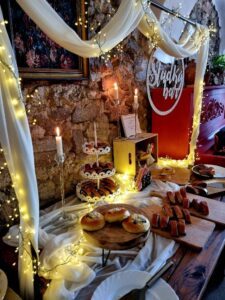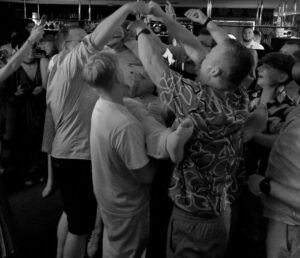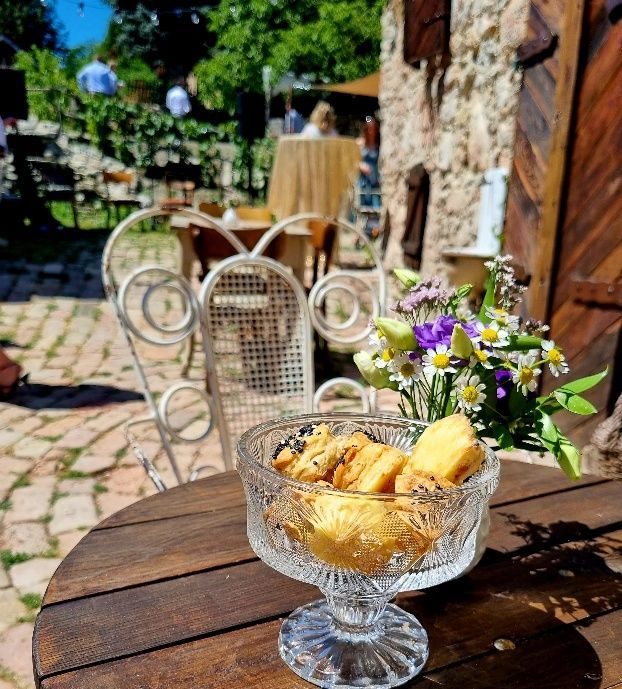Danish weddings are a festive and joyous occasion, and there are many traditional customs that are still observed today. We had the pleasure of going to my cousin’s Danish wedding at the weekend, and even though the weather was in the mid-thirties it was the most beautiful and relaxed event. Here are some of the most popular Danish wedding traditions:
- The Æresport (Gate of Honor). On the wedding day, an archway of pine branches and flowers is placed around the door to the bride’s home. This is known as the “gate of honor” and it is created by friends and family members, often featuring personal touches that represent the bride and groom. The couple then walks through the archway together, symbolizing their new life together.
- The Wedding Dress. The traditional Danish wedding dress is white, but it often has a touch of red somewhere, such as a red sash or a red rose in the bouquet. Red is a symbol of love and protection in Danish culture, so it is believed to bring good luck to the bride.
- The Wedding Shoes. The groom is not supposed to buy the wedding shoes for his bride as she will buy them herself and then keep them as a memento.
- The Rice Throwing. After the wedding ceremony, the newlyweds are showered with rice by their guests as a symbol of fertility and prosperity.

- The Wedding Kisses. There are so many kisses at a Danish wedding, with different traditions associated with the festivities. For example, anytime the wedding guests tap their knives on their plates, the newlyweds are supposed to stand on a chair to kiss; if someone starts stamping their feet, the rest of the company joins in and the couple have to crawl under a table to have a quick smooch. Additionally, if the groom chooses to leave the room at any point, male guests see this as their cue to kiss the new bride. The same goes for the groom should the bride choose to leave the room.
- The Tearing of the Veil. During the reception, the bride’s veil is ripped up by the guests. This is seen as a way of releasing the bride from her old life and welcoming her into her new life as a married woman. The guests then take home a piece of the veil as a good luck charm.
- The Brudeval, or Wedding Waltz. The most romantic part of the evening, the waltz must take place before midnight; as the couple dance the wedding-goers clap and get closer and closer to the newlyweds until they are totally surrounded and share another kiss.
- The Sock Cutting. After the waltz the groom is hoisted into the air by all his friends and one of his socks is cut off, symbolising the fact that he can no longer wander; it is then the job of the bride to sew it back together (but as my cousin’s new wife wisely said, she was going to throw it away and he could go and buy himself a new pair!).

- The Cake. There are two kinds of the cake, kransekage (a pyramidal tower of almond cookies with white icing) and overflødighedshorn (horn of plenty); the latter is also flavoured with marzipan and almond and symbolised abundance and plenty. The cake must be cut before midnight and every guest must take a piece.
- The Songs. Often popular songs are customised to feature the newlyweds and the whole wedding party joins in; in our case it included a lot of AC/DC, sung by my cousin Claus 🙂





